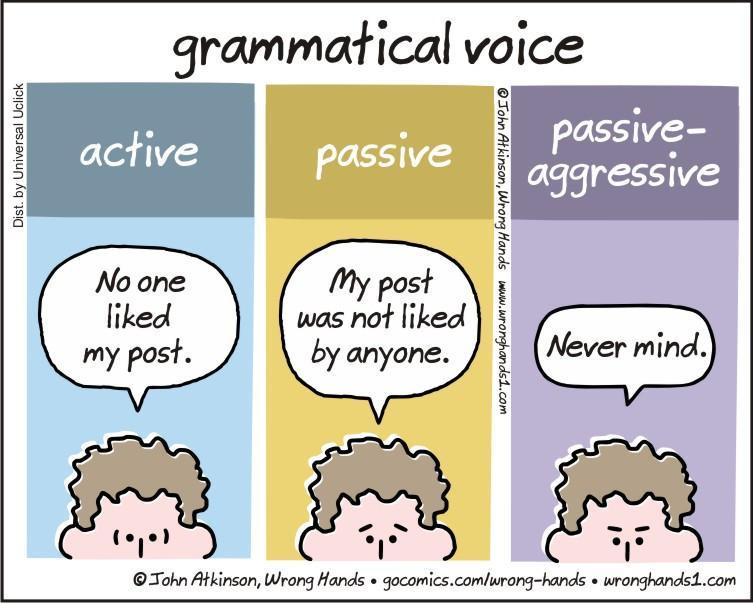

These observers posed as outside contractors, and were uniformed as maintenance and cleaning staff, coffee and water service vendors, and similar supporting personnel.

We secretly inserted observers directly into the work environment. One-way mirrored glass panels were installed to allow video cameras to record the activity, and researchers to observe the same and take notes. Three test environments were selected for our experiments: a law office, a laboratory in which experiments were performed using laboratory rats, and an automobile assembly line. My colleagues A, B, and I, designed an experiment to test the impact on worker perceptions of well-being when domesticated cats were allowed to freely roam various work environments in which the subjects were normally employed. John Geare provides a specific example for clarity. Related: Having trouble with grammar and punctuations in your research paper? Get help from native language experts now! But active voice is used to describe actions. In academic writing, passive voice is used to describe a process, the results of study, or similar material which is objective in nature. A response on Quora (John Geare, 2015) sums up the required balance in a succinct manner: In the Methods section, it is satisfactory to break the dullness of numerous passive voice sentences with the usage of the active voice. Try not to be reluctant to utilize the active voice – particularly in the Discussion section, where it is imperative to express that it is you supposing certain things and having specific assessments. The APA recommends that verb tenses and voices should be used carefully. However, in the art of writing, polarized views often become irrelevant and a balance must be achieved by using the two voices contextually.Īfter all, human agents are responsible for designing experiments…writing awkward phrases to avoid admitting their responsibility and their presence is an odd way of being objective. According to Ding (1998), in writing, the world should essentially be represented “in terms of objects, things, and materials.” Passive voice can obscure agents and readers can lose sight of the relevance of a prose that is dominated by things and objects. To create an authoritative or factual tone.įor example, ‘Pupils are not allowed in the dining hall after 1:45 p.m.In fact, some scholars have actually shown that active voice was the preferred form till the beginning of the 20 th century when the trend of objectivity became favored.Because we don't know or do not want to say who performed the action.įor example, ‘I had the feeling that I was being watched.’ - I don’t know who was watching me.To show interest in the person or object that experiences an action rather than the person or object that performs the action.įor example, the castle was built in 1066 - we are interested in the castle, not in who built it.Reasons to use the passive voiceĪlthough the active voice is usually the preferred choice, there are sometimes good reasons to use the passive voice: ‘The exam was passed by the pupil’ would change to ‘The pupil passed the exam’. Rewrite the sentence so that the subject in the 'by' phrase is closer to the beginning of the sentence.

One way to avoid using the passive voice is to look for a ‘by’ phrase. Who scored the goal? Doesn’t the writer know? Converting sentences to active voice Passive sentences can cause confusion because they can be vague about who is responsible for the action. (7 words)Īctive : The teacher collected the books.


 0 kommentar(er)
0 kommentar(er)
